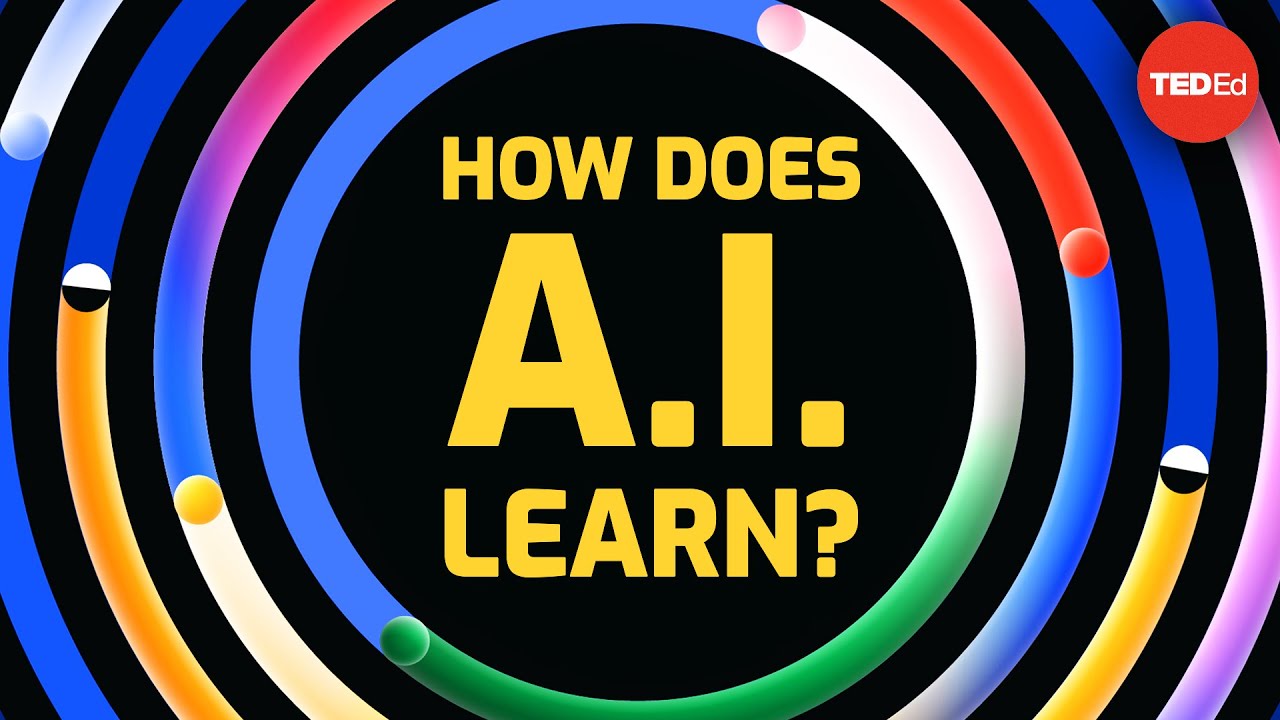In the article “How Does Artificial Intelligence Learn?” by Briana Brownell, you will explore the three major methods of machine learning that allow computers to write their own rules to problem solve and process data. The article highlights how artificial intelligence is being used today to help doctors diagnose patients, assist pilots in flying commercial aircraft, and aid city planners in predicting traffic. With these self-taught AIs, which work off a simple set of instructions to create unique rules and strategies, the question arises: how exactly does a machine learn? By investigating, negotiating, and communicating, machines are able to acquire knowledge and adapt to new situations. Through this article, you will gain insights into the fascinating world of artificial intelligence and its learning capabilities.
Methods of Machine Learning
Machine learning is a cutting-edge field that allows computers to learn and improve from experience without being explicitly programmed. There are three major methods of machine learning: supervised learning, unsupervised learning, and reinforcement learning. Each method has its own unique approach to learning and is suited for different types of tasks and data.
Supervised Learning
Supervised learning is the most common method of machine learning. It involves training a computer model using labeled data, where the input data and its corresponding output are provided. The goal is for the model to learn the mapping between the input and output data so that it can make accurate predictions on new, unseen data.
An example of supervised learning is medical diagnostics. Let’s say researchers want to develop an algorithm to classify different types of diseases based on a patient’s symptoms. They would collect a dataset that includes thousands of patient profiles, with each profile containing symptoms and the corresponding diagnosed disease. By feeding this data into a supervised learning algorithm, the model can learn the patterns and similarities between symptoms and diseases. This allows the algorithm to make accurate predictions on new patients based on their symptoms.

Unsupervised Learning
Unsupervised learning is a method of machine learning where the model learns from unlabeled data. Unlike supervised learning, there are no pre-existing labels or correct answers provided. Instead, the model must find patterns and relationships in the data on its own.
An example of unsupervised learning is pattern recognition. Let’s say researchers have a dataset of images from different animals, but they don’t have any information about the animals in the dataset. By using unsupervised learning, the model can analyze the images and identify common patterns or clusters. This allows the researchers to discover groups of similar animals without any prior knowledge or labels.
Reinforcement Learning
Reinforcement learning is a method of machine learning where an agent learns to make decisions and take actions in an environment to maximize a reward. The agent receives feedback in the form of rewards or penalties based on its actions, and it learns to adjust its behavior accordingly.
An example of reinforcement learning is treatment planning. Let’s say doctors want to develop an algorithm to recommend personalized treatment plans for cancer patients. The algorithm can learn from historical data of patients’ treatment outcomes and the corresponding treatment plans. By using reinforcement learning, the algorithm can continuously update and improve its recommendations based on the feedback it receives from patient outcomes.

Supervised Learning Process
The supervised learning process involves several steps to train a model:
Data Collection
In this step, a diverse and representative dataset is collected. The dataset should include input data and their corresponding labels.
Feature Extraction
Feature extraction is the process of transforming the input data into a set of features that the model can understand and work with. This step involves selecting relevant attributes or properties of the data that are informative for the learning task.
Training the Algorithm
Once the data is collected and the features are extracted, the model is trained using a supervised learning algorithm. The algorithm optimizes a set of parameters to minimize the difference between the predicted outputs and the actual labels in the training data.
Validation and Evaluation
After the training process, the model is evaluated using a separate validation dataset to assess its performance. This step helps to ensure that the model is not overfitting to the training data and can generalize well to new, unseen data. Different evaluation metrics, such as accuracy or precision, can be used to measure the model’s performance.
Unsupervised Learning Process
The unsupervised learning process differs from supervised learning in that there are no labels available. Here are the steps involved:
Data Collection
As in supervised learning, a dataset is collected, but this time without any labels or annotations.
Clustering
Clustering is a common technique in unsupervised learning. It involves grouping similar data points together based on their inherent properties or characteristics. Different clustering algorithms, such as k-means or hierarchical clustering, can be used to identify these groups.
Pattern Recognition
After clustering, unsupervised learning can be used for pattern recognition. The model can identify common patterns or relationships in the data without any prior knowledge. This can be useful in discovering hidden structures within the data.
Evaluation
The unsupervised learning process does not have a strict evaluation step since there are no labeled data to compare the results against. However, researchers can assess the quality of the model’s output by examining the discovered patterns or clusters and evaluating their usefulness and coherence.

Reinforcement Learning Process
Reinforcement learning follows a different process compared to supervised and unsupervised learning:
Data Collection
Similar to other methods, data is collected, but in reinforcement learning, it includes the current state of the environment, the action taken by the agent, the resulting reward, and the next state.
Feedback Loop
The agent interacts with the environment and receives feedback in the form of rewards or penalties. The goal is to maximize the accumulated reward over time. The agent adjusts its actions based on this feedback to improve its decision-making.
Updating the Algorithm
The agent updates its policy or strategy based on the feedback it receives. This can involve adjusting the weights or parameters of the model to improve its performance.
Continuous Improvement
The reinforcement learning process is iterative and continues over multiple episodes. The agent learns from its experience and adapts its behavior to achieve better outcomes. The more feedback it receives, the more refined its strategy becomes.
Challenges in Artificial Intelligence Learning
While machine learning has made significant advancements, there are still challenges that researchers and developers face:
Lack of Transparency
One challenge is the lack of transparency in machine learning algorithms. Many modern machine learning models, such as deep neural networks, are complex and difficult to interpret. Understanding and explaining how these models make decisions can be a challenge.
Ethical Considerations
Another challenge is the ethical considerations in machine learning. As AI systems become more integrated into our daily lives, the decisions they make can have significant impacts on individuals and society. Ensuring fairness, avoiding bias, and making ethical choices are important considerations when developing and deploying machine learning models.

Building Complex Artificial Intelligence Systems
To tackle more complex tasks, combining different learning methods can be effective:
Combining Different Learning Methods
By combining multiple learning methods, researchers can build more powerful and flexible artificial intelligence systems. For example, unsupervised learning can be used to discover patterns and clusters, which can then be utilized as input for supervised learning algorithms. Reinforcement learning can also be combined with supervised learning to fine-tune and improve the performance of models.
Neural Networks and Artificial Intelligence
Neural networks, a type of machine learning model inspired by the human brain, have shown great promise in various applications. Deep neural networks, in particular, have achieved state-of-the-art performance in areas such as image recognition, speech synthesis, and natural language processing. These networks utilize multiple layers of interconnected nodes, known as neurons, to process and learn complex patterns in the data.
Transparency in Machine Learning
Researchers are actively working on developing methods to make machine learning models more transparent. This involves techniques such as interpretability, explainability, and visualizations to better understand, interpret, and explain the decisions made by these models. This transparency can help build trust and improve the accountability of AI systems.
Conclusion
Machine learning offers powerful methods for computers to learn from data and improve their performance over time. Whether it’s through supervised learning, unsupervised learning, or reinforcement learning, these methods allow machines to write their own rules and have the potential to revolutionize various industries and fields. However, challenges such as lack of transparency and ethical considerations need to be addressed as AI continues to advance. By combining different learning methods, building complex AI systems, and striving for transparency, we can harness the potential of artificial intelligence while ensuring its responsible and ethical use.







Leave a Reply